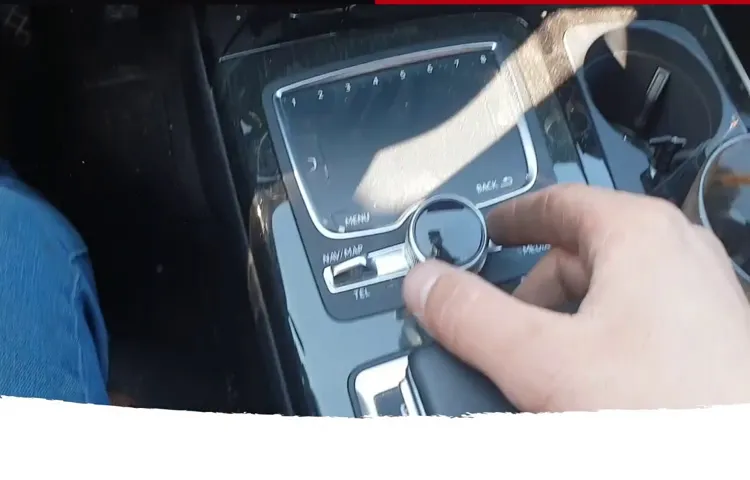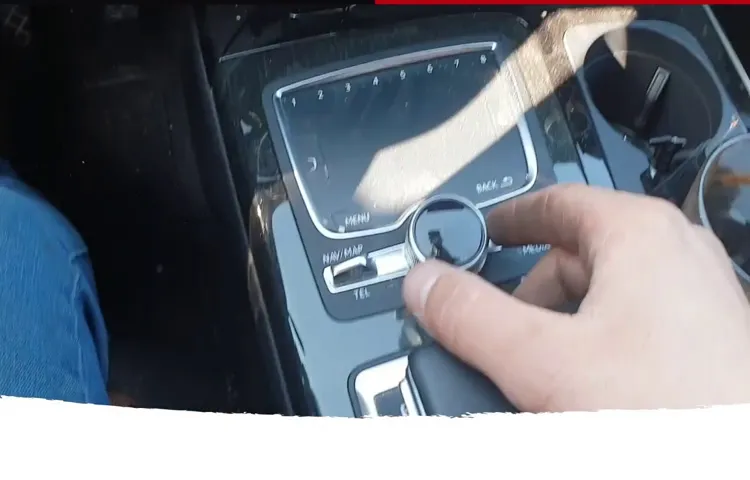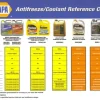As a responsible car owner, one of the most critical things you should be keeping an eye on is your tire pressure. Underinflated tires not only affect fuel efficiency but can also lead to tire wear and tear, reducing the overall lifespan of your vehicle’s tires. This is especially true for the Audi Q7, with its high-performance capabilities and advanced safety features that are highly dependent on correctly inflated tires.
So, how do you check the tire pressure in your Audi Q7? Is it as simple as using a standard tire pressure gauge? In this article, we will guide you through the step-by-step process of checking your Audi Q7’s tire pressure and give you some tips on how to maintain optimal pressure levels for your car’s tires.
Table of Contents
Why Checking Tire Pressure is Important
Checking tire pressure in your Audi Q7 is a vital part of maintaining the health of your vehicle. Driving with underinflated tires can lead to decreased fuel efficiency and a shorter lifespan for your tires. Luckily, checking tire pressure is a relatively simple process and can easily be done at home.
First, locate the tire pressure label usually found on the driver’s side doorjamb or in the owner’s manual. Then, use a tire pressure gauge to measure the pressure in each tire. If the pressure is lower than the recommended amount, use an air compressor to fill the tire until it reaches the correct PSI.
It’s important to remember to check your tire pressure regularly, as fluctuations in temperature and normal wear and tear can affect the pressure in your tires. By making this a regular part of your vehicle maintenance routine, you can ensure that your Audi Q7 is as safe and efficient as possible.
Ensures Safety on the Road
Checking tire pressure is one of the most important things you can do to ensure your safety and the safety of others on the road. Your tires are the only things between you and the road, so it’s crucial that they’re in top condition. Low tire pressure can cause a number of problems, including reduced gas mileage, decreased handling, and increased wear on your tires.
It can also lead to tire failure, which can be extremely dangerous, especially at high speeds. On the other hand, overinflated tires can be just as dangerous, as they can cause your tires to lose traction and even lead to blowouts. To avoid these risks, it’s essential to check your tire pressure regularly using a reliable tire pressure gauge.
By doing so, you’ll be able to make corrections as needed and keep yourself and others safe on the road.

Improves Fuel Efficiency
Tire pressure may seem like a small detail, but it can have a big impact on your vehicle’s fuel efficiency. When your tires are properly inflated, they create less rolling resistance, making it easier for your car to move forward. This means that your engine doesn’t have to work as hard to keep you moving, ultimately resulting in better fuel economy.
On the other hand, if your tires are underinflated, your car has to work harder to move, causing it to use more fuel and decreasing your gas mileage. So, make sure to check your tire pressure regularly to ensure that your tires are inflated to the manufacturer’s recommended level. Doing so can help you save money on gas in the long run and reduce your carbon footprint.
Prolongs Tire Life
Checking tire pressure is crucial for prolonging tire life. Proper inflation ensures even tread wear, which in turn helps tires last longer. When tires are underinflated, they have more contact with the road, causing more friction and heat buildup.
This can lead to premature wear and tear on the tire’s edges, making it unsafe to use. Overinflated tires, on the other hand, can cause the center of the tire to wear out faster. By regularly checking your tire pressure, you can avoid these problems and keep your tires in good condition, prolonging their life and saving you money in the long run.
So, don’t neglect this simple yet essential maintenance task, and always check your tire pressure before hitting the road.
Steps for Checking Tire Pressure
If you’re wondering how to check tire pressure in your Audi Q7, don’t worry, it’s an easy process that you can do yourself. Follow these simple steps. First, locate the recommended tire pressure for your vehicle in the owner’s manual or on the label inside the driver’s door.
Then, remove the valve cap from one tire and press the tire pressure gauge into the valve stem. You’ll hear a hissing sound as the gauge takes a reading. Check the gauge display to see the psi (pounds per square inch) reading.
If the reading is lower than the recommended pressure, add air to the tire until it reaches the proper psi. Repeat this process for each tire and remember to put the valve caps back on after checking each one. Regularly checking your tire pressure is important for your safety on the road, as underinflated tires can reduce fuel efficiency and cause damage to your vehicle over time.
Step 1: Locate the Tire Pressure Indicator
Checking Tire Pressure When it comes to maintaining your vehicle, checking your tire pressure is a must. Proper tire pressure not only helps to ensure a smoother ride but also helps to increase fuel efficiency and extend the life of your tires. The first step in checking your tire pressure is to locate the tire pressure indicator, which can typically be found in the owner’s manual or on the driver’s side doorjamb.
The indicator will provide you with the recommended tire pressure for your specific vehicle. It’s important to note that the recommended pressure may vary based on the make and model of your car, as well as the type of tires you have. Once you locate the indicator, you can use a tire pressure gauge to check the pressure of each tire.
Simply remove the cap from the valve stem, place the gauge onto the stem, and take note of the reading. If the pressure is too low, add air until you reach the recommended pressure. If the pressure is too high, release air until you reach the recommended pressure.
It’s recommended to check your tire pressure at least once a month and before any long road trips to ensure your safety on the road.
Step 2: Remove Valve Cap and Attach Pressure Gauge
If you want to ensure your car is running safely, you definitely need to check your tire pressure periodically. The first thing you need to do is locate the valve stem, which is usually located on the outside wheel rim. Once found, remove the valve cap and attach the pressure gauge to the valve stem.
This is where the fun begins! You get to see how much air is in your tires by reading the gauge. If it’s lower than the recommended pressure, you’ll need to add air to your tires. If it’s higher, you’ll need to release some air.
It’s important to make sure your tires are always inflated to the recommended pressure to prevent unnecessary wear and tear, and adverse impact on your car’s fuel consumption. By regularly checking and adjusting your tire pressure, you’ll ensure your car is running at its best, and you’ll increase the safety of both you and your passengers.
Step 3: Read Pressure and Compare with Manufacturer’s Recommended Pressure
Once you’ve located your tire pressure gauge and unscrewed the valve cap, it’s time to read the pressure and compare it to the manufacturer’s recommended pressure. You’ll need to firmly press the gauge onto the valve stem and wait for a measurement to appear. Make sure you check your tire pressure when the tires are cold, as heat can cause the pressure to increase and give you an inaccurate reading.
Once you have a reading, compare it to the manufacturer’s recommended pressure, which is typically found inside the driver’s side doorjamb or in the owner’s manual. If the pressure is too low, inflate the tires until they reach the recommended level. On the other hand, if the pressure is too high, let some air out until it reaches the recommended level.
Remember that proper tire pressure is essential for optimal fuel efficiency, tire life, and safety on the road. Don’t neglect this important maintenance task, as it can save you time and money in the long run.
Step 4: Inflate/Deflate Tire as Needed
After checking the tire pressure with a gauge, you may need to inflate or deflate the tire to the recommended level. Inflation is necessary when the pressure is below the recommended level, while deflation is needed when the pressure is too high. Overinflating a tire can cause it to wear out faster in the center, while underinflating can lead to increased wear on the sides of the tire.
To inflate the tire, you will need an air compressor or a bike pump with a pressure gauge. Attach the pump or compressor to the tire valve and pump air until the gauge shows the recommended level. To deflate the tire, simply press on the center of the valve stem until you hear air hissing out.
Keep checking the pressure until you achieve the desired level. Remember to recheck the pressure after inflating or deflating to ensure you have reached the ideal pressure for your vehicle. Remember, proper tire pressure is a simple yet crucial step in ensuring safe driving and the longevity of your tires.
So, take a few minutes every month to check them and stay safe on the road.
Tips for Maintaining Proper Tire Pressure
If you are an Audi Q7 owner, one of the most important things you can do for your vehicle is to maintain proper tire pressure. Not only does it ensure optimal handling and performance, but it also increases fuel efficiency and extends the life of your tires. But how do you check tire pressure in an Audi Q7? First, locate the tire pressure monitoring system (TPMS) button on your dashboard and press it to activate the system.
Then, use a tire pressure gauge to measure the pressure in each tire, being sure to follow the recommended pressure levels in your owner’s manual. If any tire is underinflated, fill it up with air until it matches the recommended pressure level. It’s also important to periodically check your tire pressure, especially before long trips, to ensure safety and prevent any potential damage to your tires or vehicle.
By maintaining proper tire pressure, you can ensure a smooth, comfortable ride for you and your passengers.
Check Tire Pressure Monthly
Maintaining proper tire pressure is essential in keeping your vehicle running safely and efficiently. One of the most important tips to remember is to check your tire pressure monthly. It’s easy to overlook, but having the correct tire pressure can prevent tire wear and improve fuel efficiency.
Overinflated tires can cause them to wear out unevenly, while underinflated tires can decrease fuel efficiency and even pose a safety hazard on the road. It’s crucial to follow the recommended tire pressure for your specific vehicle, which can typically be found in the owner’s manual or on a sticker located inside the driver’s door jamb. Checking your tire pressure is a simple process that can prevent accidents and save you money in the long run.
Make it a habit to check your tire pressure monthly, and you’ll enjoy a safer and more economical driving experience.
Check Tire Pressure Before Long Trips
Maintaining proper tire pressure is crucial for both safety and vehicle performance. Before embarking on a long trip, it’s imperative to check your tire pressure to ensure they’re at the recommended level. Under-inflated tires can lead to reduced fuel efficiency, decreased handling and braking abilities, and even tire failure.
Over-inflated tires also increase the risk of a blowout and reduce handling capabilities. Therefore, it’s vital to maintain proper tire pressure to ensure optimal performance and safety. To maintain proper tire pressure, it’s recommended to check them monthly or before a trip using a tire gauge.
It’s crucial to check pressure levels when tires are cold, as heat can cause them to expand and give an inaccurate reading. Check the car manufacturer’s recommended tire pressure, typically found in the owner’s manual or inside the driver’s door jamb. Ensure you inflate your tires to the correct PSI (pounds per square inch) level, not the maximum PSI level noted on the tire.
Remember, your tires are the only point of contact between your vehicle and the road, making them critical for safety and performance. By maintaining the correct tire pressure, you can improve your vehicle’s fuel efficiency, handling and braking capabilities, and prevent dangerous accidents.
Check Tire Pressure When Tires are Cold
Maintaining Proper Tire Pressure One of the most critical aspects of ensuring your tires last as long as possible and remain safe on the road is to maintain the appropriate tire pressure. When the tire pressure is insufficient, it causes the tire to wear out more quickly, resulting in reduced performance and increased fuel consumption. On the other hand, overinflated tires can result in a harsh and bumpy ride that also wears out the tires more quickly.
The ideal way to check tire pressure is when the tires are cold, such as first thing in the morning before driving. Ensure that you follow the manufacturer’s recommended tire pressure, which can usually be found on the vehicle’s tire information placard or in the owner’s manual. Additionally, it is crucial to inspect your tires routinely visually, looking for any cracks or other indications of wear and tear.
Keep your tires properly maintained, and they will keep you safe on the road.
Replace Valve Caps After Checking Tire Pressure
Maintaining Proper Tire Pressure Maintaining proper tire pressure is essential for ensuring a smooth and safe driving experience. One tip for maintaining the right tire pressure is to replace the valve caps after checking your tire pressure. Valve caps help keep the valve clean, clear, and free from dirt and debris, which can affect the accuracy of your pressure gauge.
The caps also help prevent air from escaping from the tires and can prolong the lifespan of the valve stems. By maintaining the right tire pressure, you’ll reduce the risk of a blowout, extend the life of your tires, and improve fuel efficiency. Plus, it’s a quick and easy task that you can perform regularly to ensure your safety on the road.
So, next time you check your tire pressure, don’t forget to replace the valve caps for optimal tire performance.
Conclusion
In conclusion, checking the tire pressure in your Audi Q7 is a crucial step in ensuring a safe and smooth ride. Don’t let low tire pressure deflate your driving experience! With these simple steps, you can easily keep your tires inflated to the proper pressure level and hit the road with confidence. So, keep calm, pump up, and always stay inflated!”
FAQs
What is the recommended tire pressure for Audi Q7?
The recommended tire pressure for Audi Q7 is 35 PSI for both front and rear tires.
How often should I check the tire pressure in my Audi Q7?
It is recommended to check the tire pressure in your Audi Q7 at least once a month or before going on a long trip.
Can I use any tire pressure gauge to check the tire pressure in my Audi Q7?
Yes, you can use any tire pressure gauge to check the tire pressure in your Audi Q7, but it is recommended to use a digital gauge for more accuracy.
What should I do if the tire pressure in my Audi Q7 is too low?
If the tire pressure in your Audi Q7 is too low, you should inflate the tire to the recommended pressure as soon as possible. Driving with low tire pressure can cause damage to the tire and affect the fuel economy.
Is it safe to drive my Audi Q7 with a flat tire?
No, it is not safe to drive your Audi Q7 with a flat tire. Driving with a flat tire can cause damage to the tire and affect the handling of the vehicle.
How can I tell if my Audi Q7 has a tire pressure monitoring system?
Audi Q7 models 2008 and newer are equipped with a tire pressure monitoring system (TPMS). You can check the instrument cluster for a TPMS warning light.
Can I reset the tire pressure monitoring system in my Audi Q7 myself?
Yes, you can reset the tire pressure monitoring system in your Audi Q7 yourself using the MMI system or the TPMS reset button located under the steering wheel. Consult your owner’s manual for detailed instructions.


